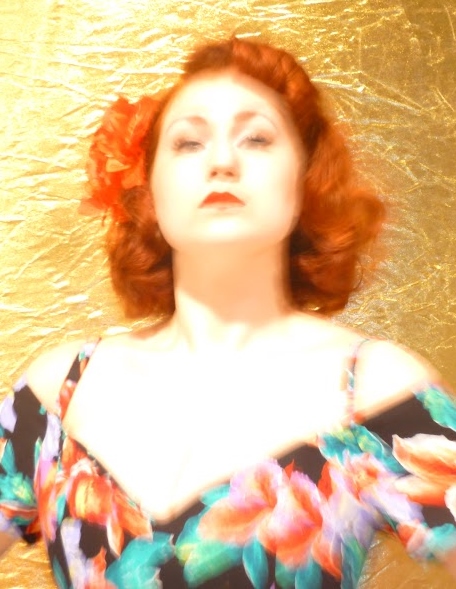My love of red-headed folk is long-standing. There are ginger genes in my family. My nan had auburn hair and my mum is a bright, coppery beacon. As a child I even had a shrine of images on my wall that burst with oranges and reds and translucent skin. I was in awe of red-heads even then; I called them my ‘happy people’. Seeing an abundance of coppery hair has always drawn me and made me smile. I guess you could call me a rutiluphile but for me it’s much more than sexual attraction. It’s a feeling of affinity and of kinship. It’s a feeling of both longing and belonging.
Whilst I’m only a token ginger by virtue of my mum’s carrot hair hues and Lush’s rouge henna, I heartily identify as a redheaded woman. Lucky me, then, that there are some awe-inspiring, powerful, bold, flawed, ginger heroines throughout history to take a cue from. From Boudicca to Ygritte the Wildling, via Lucille Ball and Elizabeth I, redheaded women are known for their fieriness, passion and explosive tempers. I mean, you wouldn’t mess with Black Widow or Jean Gray, would you?
The past is bursting with examples of red-headed women inspiring art. Dante Gabriel Rossetti and other Pre-Raphelite painters loved the lusciousness that red-headed women brought to their work. Alphonse Mucha created flowing art-deco images blazing with red-heads. Part of the appeal to artists is how striking red hair is. It is visually arresting and creates a powerful contrast or emphasis that makes for compelling art. Just as red-headed men have become associated with being untrustworthy due, in part, to the depiction of Judas as a redhead, women with red hair have become synonymous with sensuality, licentiousness and deception. The image of the wily temptress is often portrayed simply by the addition of ginger hair.
Throughout history, red-headed women have been known not only for their stunning beauty, but for their ferocity and cunning. Being already well-aware of the physical allure of red hair, I’ve recently been reading more about the characters of these well-known red-headed women. I love historical fiction; it’s meaty, character driven, informative (when taken with a pinch of salt) and full of amazing personal stories. What intrigues me most is the intimacy of the readers’ relationship with the central characters, whether they’re maids, jesters or monarchs. Little wonder then that I adore Tudor fiction with the powerful and poisonous Queen Elizabeth I. I’ve read pretty much every novel based on her life, and those of her mother and father. (Henry VIII was, after all, a red-head).
In terms of non-fiction, Tracy Borman’s Elizabeth’s Women: The Hidden Story of the Virgin Queen shows us a female-centric world in which the cult of the personality, as in most monarchies, prevailed. Elizabeth used her red-headedness to her advantage throughout her reign, and not just as a means of seduction. It was a blatant defiance of any doubt cast on her parentage. Her hair was Tudor red and she played on this as proof that she was her father’s daughter and that she was capable of leading as Henry had before her. Naturally, red hair became fashionable during the Tudor dynasty and Elizabeth relied on this as a symbol of self. In her later life she wore wigs, which she had made in different hues of red and copper. It certainly had the desired effect, creating an instantly recognisable figure to us today.
Reaching even further back into society’s cult of the redhead is the legendary figure of Boudicca. When I discovered the Dreaming the Eagle series based on the warrior queen, I think I made a sound that only dogs and Professor Xavier could hear. Boudicca has is all as far as I’m concerned – she’s a warrior, she’s a leader, she’s Scottish, she’s anti-establishment and she is so ginger it hurts (see my post Me, Myself and Merida for more on this killer combination). The mixture of the mythology surrounding her and historical fiction format, this series is proving to be an immediate favourite. In these books, we meet the warrior queen Boudicca before she even exists – when she is a child named Breaca. We meet the men and women in her community and see how central the spirituality of her nation is to her every choice and action. It is laden with small details that together build an immersive world, every bit as real as our own. Boudica is depicted as a woman, destined for greatness, but by no means ready and willing. It is a tough slog with hard decisions, personal loss and bad choices.
My most recent red-head reading has been Red: A Natural History of the Redhead by Jacky Colliss Harvey. It’s essential reading for red-heads, aspiring red-heads and social historians. It charts the mythological and social perception of red-heads, their anatomical differences, the gendered assumptions about redheads and more. The gene may be recessive, but the cultural obsession is growing!
As for me, I’m ready for the red-head-revolution:

red-head and proud





